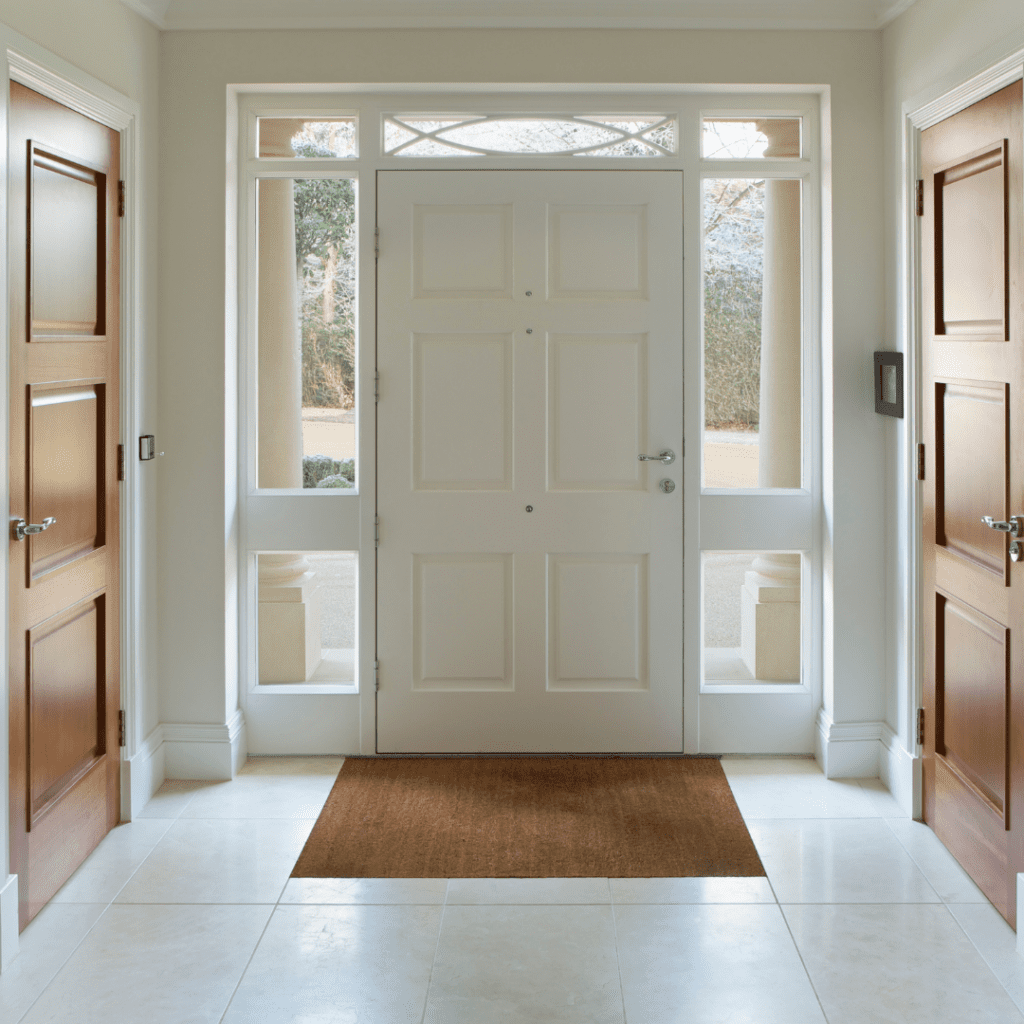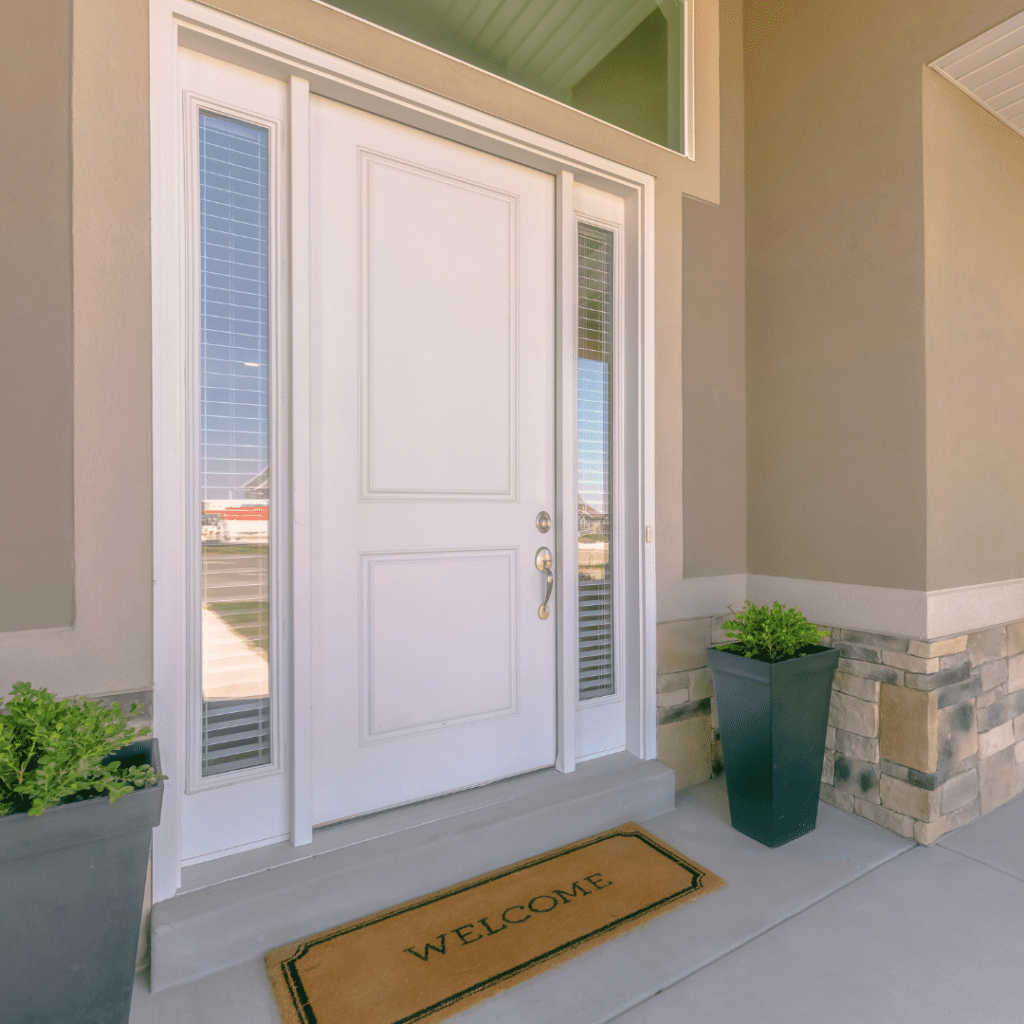Just as choosing the right partner requires careful consideration of multiple factors, choosing exterior door demands thoughtful evaluation of various elements. You’ll need to weigh the benefits of different materials, from classic wood to modern fiberglass, while considering your local climate, security needs, and architectural style. Whether replacing an old door or selecting one for new construction, your choice will impact your home’s curb appeal, energy efficiency, and safety for years to come. Let’s explore the critical elements that will direct your decision.

Understanding the available materials and their unique properties will help you make an informed decision when selecting an exterior door. Each material presents distinct design aesthetic considerations and door maintenance needs that affect your long-term cost-benefit analysis.
Wood doors offer unmatched natural beauty but require regular upkeep and repainting, impacting maintenance costs and environmental impact factors. Steel provides security and affordability, though it’s prone to denting in high-traffic areas where accessibility requirements are indispensable.
Fiberglass strikes an ideal balance with its durability, weather resistance, and versatile styling options. While fiberglass doors command slightly higher prices, their corrosion resistance and minimal maintenance needs make them a practical long-term investment. Consider your climate, budget, and architectural style when weighing these options, as each material considerably influences your door’s performance and longevity.
With your material selection finalized, precise measurements become the next important step in your exterior door project. You’ll need to carefully measure the rough opening, guaranteeing proper jamb depth measurement for a secure fit. Consider shim placement recommendations to maintain even spacing, and don’t forget to account for exterior trim options in your calculations.
These measurements are critical for ordering a pre-hung door that fits perfectly and allows for proper weatherproofing. Take multiple measurements at different points to account for any irregularities in the opening.
Selecting the right door style for your home’s architectural design guarantees a cohesive and visually appealing exterior. For traditional curb appeal, colonial and Victorian homes shine with wood or fiberglass doors featuring decorative glass patterns and classic hardware coordination.
If you’ve got a mid-century modern home, opt for minimalist designs with clean lines and contemporary entry lighting options.
Natural wood doors with color-complementary accents, like wrought iron fixtures, benefit rustic and farmhouse styles. Consider frameless glass or aluminum options for contemporary homes that create sleek, sophisticated entrances.
Spanish and Mediterranean architecture calls for distinctive arched doorways or intricately carved wooden doors that enhance the home’s character. Match your door’s style to your home’s architectural elements, creating a functional and aesthetically pleasing entrance.
Modern exterior doors offer substantial energy-saving features that can transform your home’s thermal efficiency. Selecting models with double-paned glass and foam-filled cores will maximize your door’s thermal insulation performance.

To prevent air leakage, guarantee your door includes quality weatherstripping and an adjustable threshold that maintains a tight seal as your home settles.
When evaluating doors, prioritize these protective features to create an energy-efficient entrance that shields your home from environmental challenges. By choosing a door with inclusive weather protection, you’ll enhance both comfort and long-term energy savings.
Your exterior door must be a robust security barrier to protect your home from the elements. When selecting security features, prioritize deadbolt lock strength with a minimum 1-inch extension into the door frame. Install reinforced strike plates with tamper-resistant screws to enhance your door’s resistance against forced entry attempts.
For additional protection, always choose an outswing door and consider impact-resistant glass panels and reinforced door materials that make break-ins more difficult. Modern keyless entry systems offer convenience and security through digital keypads and smart home integration.
Before finalizing your security choices, schedule a professional locksmith consultation to evaluate your needs and recommend the most effective locking system. These security measures will create an extensive defense system for your home’s main entry point when properly implemented.
The right color and finish for your exterior door can dramatically transform your home’s appearance while affecting its resale value. When selecting coordinating colors, consider your home’s architectural style and existing color palette. Choose a paint sheen that withstands weathering effects while maintaining its appearance over time.
Today’s doors offer extensive customization options, from classic wood stains to modern specialty finishes.
Before plunging into a door installation project, you must carefully evaluate several primary requirements to guarantee a successful outcome. First, determine whether you’ll opt for a pre-hung or slab door, which affects your installation approach. Pre-hung doors offer easier installation but require precise rough opening dimensions and jamb size considerations.
Assess the condition of your existing frame to determine if you need a complete replacement or if a door replacement kit will suffice. Check frame compatibility with your chosen door style and measure all dimensions scrupulously.
If you plan structural modifications to accommodate a larger door or a different design, you’ll likely need professional installation. Don’t hesitate to hire an expert, especially when dealing with complex installations that could affect your home’s structural integrity.

Planning your exterior door budget requires careful consideration of both immediate costs and long-term value. While you’ll need to invest at least $1,000, focus on cost-effective upgrades that guarantee durability and functionality rather than choosing the cheapest option. When making your decision, consider lifetime maintenance costs and potential financing options.
Research seasonal sales during spring cleaning and Labor Day for cost-saving strategies. Calculate the total investment, including hardware, installation, and customization. Compare materials based on their longevity and maintenance requirements. Explore budget-friendly solutions without compromising on quality. Consider energy efficiency features that can offset initial costs through utility savings.
Remember that a well-chosen exterior door is a significant investment that can last 30+ years. Balancing your immediate budget constraints with long-term value and performance requirements is crucial.
Choosing the right exterior door is more than aesthetics—it’s an investment in your home’s security, energy efficiency, and long-term value. By selecting a door that aligns with your climate, architectural style, and security needs, you’ll enjoy lower maintenance costs, improved insulation, and enhanced curb appeal for years.
At Mr. Build, we offer high-quality exterior doors to withstand Florida’s climate while providing superior durability and security. Whether replacing an outdated door or upgrading your home’s entryway, our expert team is here to help. Contact us today to explore our selection and find the perfect door for your home.